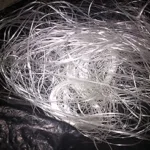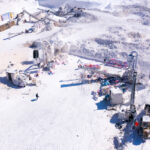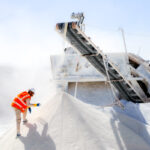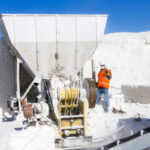The most important applications of calcium carbonate in the glass industry
- Home
- CALCIUM CARBONATE
- The most important applications of calcium carbonate in the glass industry
The most important applications of calcium carbonate in the glass industry
calcium carbonate (CaCO3) , also known as limestone, is an essential raw material in the glass industry. It plays an important role in many manufacturing stages, including:
- Reducing the melting point of the mixture:
- The main component of glass is silica sand (SiO2), which has a high melting point (about 1700 °C).
- Calcium carbonate is added to silica sand to form a mixture called raw glass.
- Calcium carbonate reacts with silica sand at high temperatures to form new compounds with much lower melting points (about 800-900°C).
- This allows the glass to be manufactured more efficiently and with less energy consumption.
- Chemical reactions:
- Calcium carbonate reacts with silica sand at high temperatures (about 800-900°C) to form calcium silicate, which is the main component of glass.
- Calcium carbonate can react with other substances found in raw glass, such as sodium oxide and potassium oxide, to form complex compounds that affect the properties of the glass.
-
Effect of the amount of calcium carbonate:
- The amount of calcium carbonate added to raw glass affects the final glass properties.
- Increased amount of calcium carbonate:
- Increases glass hardness and corrosion resistance.
- Reduces the melting potential of glass.
- Makes the glass more fragile.
- Low amount of calcium carbonate:
- Makes glass more fusible.
- Increases the shine of glass.
- Makes glass less resistant to corrosion.
- Improve glass stability:
- Calcium carbonate is a stabilizing agent that helps prevent separation of glass components.
- It gives glass better mechanical properties, such as strength and hardness.
- Reduces the susceptibility of glass to corrosion and fragmentation.
- Diversity of uses of glass:
- Calcium carbonate can be used to make different types of glass, such as clear glass, colored glass, and heat-resistant glass.
- Other substances can be added to calcium carbonate and silica sand to change the properties of glass, such as lead oxide to increase luster or boron oxide to increase heat resistance.
- Types of calcium carbonate:
- Limestone: It is the most common natural form of calcium carbonate.
- Chalk: It is a very fine type of calcium carbonate.
- Marble: It is a type of crystalline calcium carbonate.
- Calcium carbonate alternatives:
- Soda: is a common substitute for calcium carbonate, but increases the solubility of the glass in water.
- Potash: It is another alternative to calcium carbonate, but it is more expensive.
- Environmental impacts:
- Using calcium carbonate in glass making is an environmentally friendly alternative to other materials such as soda.
- Reduces greenhouse gas emissions.
- Helps to recycle glass more effectively.
- Glass applications:
- Glass is used in many different applications, such as:
- Windows and doors.
- Utensils and household items.
- Bottles
- Lenses
- Optical fiber.
In general, calcium carbonate plays a vital role in glass making. It helps reduce production costs and improve the properties of glass and its versatility.
About the largest company in grinding and producing calcium carbonate Globe Stone Hills
Categories
Latest Posts
Contact the Globe Stone Hills team
Call Anytime
Gallery
- © Copyright 2024. Globe Stone Hills




















